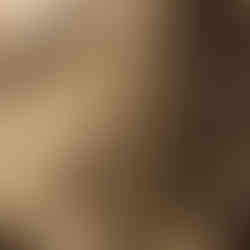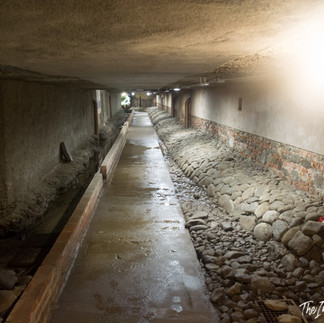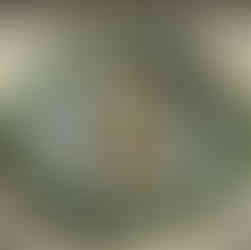Last week, my partner and I decided to spend a short weekend in the north of Tuscany, a region that I know quite well while my partner less.
I had already been in Pistoia, just passing through, while I know Lucca better, but having two full days available there were also two gaps that I had been waiting to fill for some time; the first is a very famous place in Italy among travel lovers: the so-called Ponte del Diavolo in Borgo a Mozzano, an ancient bridge with a very particular shape. Regarding the second place I have to dwell in a brief excursus. As I have already written several times on the blog, I am an art lover; each art lover has his favorite painting, what he considers "the most beautiful painting in the world"; for Marcel Proust it was Johannes Vermeer's View of Delft; for Aldous Huxley it was the Resurrection by Piero della Francesca (and the memory of this quote saved Borgo Sansepolcro from destruction when the captain of Her Majesty's artillery Tony Clarke, remembering Huxley's words, decided to suspend the bombing on the city that hosted this wonderful painting). For me the most beautiful painting in the world is The Deposition by Pontormo, which is located in the church of Santa Felicita in Florence; from this painting I developed a deep passion for Pontormo that drags me, wherever I go (and particularly in Tuscany, a land that still hosts most of his works) to find out if there are works by Pontormo to admire; coincidentally, in the area where we were headed for this weekend there is one of Pontormo's best and most important works: the frescoes for the Villa Medicea in Poggio a Caiano, while another work worthy of attention (although not among his best) is located in Lucca, in the museum of Palazzo Mansi; which is why, in leaving for this short weekend I was quite anxious at the prospect of finally seeing, in particular, the frescoes of the Medici villa, which for so long I had only admired in books.
Pistoia
Country: Italy
Region: Tuscany
Time of visit: September 2021
My rating: 6/10
Duration of visit: 7 hours
End of the excursus, it's time to leave! Our first stop was Pistoia; it is a city slightly "under the radar" compared to other more famous Tuscan cities such as Florence, of course, but also Siena, Lucca, Pisa or Arezzo.
In fact, Pistoia has quite a few things to offer on an artistic level, but these are niche works aimed specifically at connoisseurs; I am referring to the fact that Pistoia holds some medieval sculptures of absolute importance and that medieval sculpture is not an art form that typically attracts the masses. As for me, my passion for art comes from afar, because my parents were themselves passionate and collectors and they certainly influenced me in developing this passion. Names like Giovanni Pisano and Jacopo della Quercia routinely circulated in conversations at lunch (such fun uh!!) so I can say that I am somewhat familiar with their works. In fact, these are authors who, if they are not necessarily in tune with modern tastes (but we will see that perhaps this is not entirely true), should certainly be explored, because it can be said without fear of denial that without them Michelangelo and Gian Lorenzo Bernini would not have existed and a deeper knowledge of their works is a necessary prerequisite to better understand the works of those who came after them.

Consistent with this premise, our first stop was the Pieve di Sant'Andrea. In this church there is the pulpit by Giovanni Pisano, one of the most important works of art in Pistoia. It is believed that the works on the pulpit begun in 1298 and lasted for about four years (information comes from Vasari's Lives).
It is a truly exceptional work that inevitably brings to mind another extraordinary work by Giovanni Pisano: the pulpit of the cathedral of Pisa. Anyone, accustomed to the heights of virtuosity later reached by masters such as Michelangelo and Bernini, tends to take for granted not only the difficulty in itself of marble sculpture, but also the complexity of composing, while carving a difficult material such as marble, a figure that is harmonious and arranged in a uniform and not chaotic way. The composition of a sculptural scene is a problem that has been sensationally solved many times in the history of art; some examples, among thousands, may be the Roman honorary columns, such as the Trajan column, or the magnificent early work of Michelangelo: the battle of the Centaurs.
They are all works where the potentially chaotic tangle of subjects is organized in such a way as to be a harmonious whole, with great skill on the part of the author.
Giovanni Pisano is undoubtedly one of the sculptors who, after centuries in which the technique of dominating marble had partially fallen into oblivion, gave new life to this form of art, paving the way for great artists of subsequent generations. But the exceptional nature of Giovanni Pisano's works does not consist only in having awakened a technique that in the past centuries had often expressed itself in static and stereotyped forms; what I find extraordinary in the pulpit of the Pieve di Sant'Andrea, for a work of the Tuscan Gothic period, is the almost expressionist mimicry of the faces and bodies. Giovanni Pisano's subjects still have the "angularity" (is it the right word? I should have payed more attention during my english lessons...) typical of Romanesque sculpture, but what an evolution compared to the inexpressiveness and two-dimensionality of his immediate predecessors!
Just as comparing the works of Giovanni Pisano it is natural to think that the young Michelangelo, in sculpting the Battle of the Centaurs, had his work in mind, even more so it is natural to think that Niccolò dell'Arca had very clear the work of the Pisan sculptor in creating his extraordinary Lamentation of the Dead Christ of Bologna.
It is sufficient to compare the works of Giovanni Pisano with those of the masters of previous generations (I am thinking of Benedetto Antelami or Wiligelmo, to name just two extraordinary artists) to understand what revolutionary significance the work of Giovanni Pisano must have had in the eyes of his contemporaries. The mangled faces and the bodies twisted by pain seem to anticipate Expressionist cinema by almost a millennium; Giovanni Pisano's pulpit is a real film that unfolds before the eyes as the observer rotates around the base.
Well... all in all this Pistoia is starting with fireworks!
On with the second stop! I had read that, among the attractions of Pistoia, the tour of the underground city was worth a visit. I'll be very brief about it: I want an hour of my life (and money) back!! Ok, I understand that the city's undergrounds are (literally) the foundations of a city's history, but in Pistoia the city's underground tunnels are simply, well, tunnels; some are ancient, ok, others modern tunnels made of concrete; but any Italian city sooner or later in its history has developed on top of an older underground city, and any Italian city in the course of its history has done some work of hydraulic engineering such as deviating the course of a river. I don't think that Pistoia has anything to offer from this point of view. Trust me, save an hour of your life and go further.
Before moving on to anything else, I'd like to point out the façade of the Ospedale del Ceppo, with its frieze in polychrome and glazed terracotta. Also on this I have to make a little digression: just as everyone has their own favorite artist, I think that each of us has the artist who just can't appreciate; in my case it's Bruce Springsteen. Ok, I know, I already imagine people ready to swear death to me, but I just can't make it, I don't argue that he is very good, but I just never managed to appreciate him. I tried, I swear, and I tried again, but nothing. In the field of art, for me, this award goes to the della Robbia family; it is a family (the best known members were Luca, Andrea and Giovanni) who, through their workshop, specialized in glazed polychrome terracotta, had great success in Tuscany in the fifteenth century, decorating most of the churches and prestigious buildings; their white and blue enamels seem to me a bit all the same, the enamel technique removes details from the work and, ok, I understand that initially their works may appear graceful and decorative, but they have always left me perplexed (and so I made enemies both Bruce Springsteen fans and Della Robbia fans, great marketing and self promotion work, good job pal). The facade of the Ospedale del Ceppo is decorated with a polychrome frieze, made by Santi Buglioni, which is somewhat reminiscent of a film by Buz Luhrmann developed horizontally on ceramic. In case you have any doubts, I'm not even a Buz Luhrmann fan. Below the frieze there are some polychrome roundelsmade by the renowned Della Robbia workshop. The overall effect is quite "noisy" for a fifteenth-century Tuscan palazzo ...
The next stop is the most famous place in Pistoia: the central square with the Government Palace, the Cathedral and the Baptistery. It is, indeed, a beautiful square, on which I don't have much to add to what you will find in any tourist guide. I would just like to point out one noteworthy work that is located inside the Cathedral of San Zeno.
The first work is, unfortunately, relegated to a side wall, where it is difficult to fully admire it, at the end of the left aisle; it is the so called Madonna di Piazza, by Andrea del Verrocchio and Lorenzo di Credi. Personally I find it difficult to discern how much of the work was created by Verrocchio (Leonardo da Vinci's master. an extraordinary artist) and how much it is the work of his pupil Lorenzo di Credi (a good artist who never reached the skill of the master); it is a virtuosic and very well preserved work, with bright colors, where the perspective planes overlap in an extraordinary way and where the oriental carpet at the foot of the Madonna, as well as being an unusual piece of furniture for the paintings of that period, is truly a piece of skill in the rendering of the fabric and in its three-dimensionality.
La BotteGaia
After having delighted the eyes, it is also advisable to take care of the palate and a few meters from the Cathedral of San Zeno there is an excellent restaurant that I had visited years ago keeping an excellent memory: La BotteGaia (a word pun between the word "bottegaia" which means "shopkeeper" and the words "botte" which means "barrel" and "gaia" which means "happy").
After many years, the quality has not changed at all: squid with bean cream and marinated onions; crispy pie with porcini mushrooms and parmesan cheese; pici with mushroom ragout; all accompanied by an excellent Chardonnay suggested by the host, which proved to be excellent.
After lunch the visit continued for a while without reserving any particular surprises: the Church of San Giovanni Fuorcivitas contains some secondary works (a pulpit by the sculptor Guglielmo da Pisa, not up to the pulpit by Giovanni Pisano, a polyptych by Taddeo Gaddi not particularly relevant, a visitation by Luca della Robbia).
A brief visit to the Basilica of the Madonna dell'Umiltà did not give other surprises, except perhaps from an architectural point of view, considering the particular design of the plant, which develops in width rather than in length.
The travel program would have included two other stops (the Church of Tau and San Domenico) but they were both closed: memo for me (after all these years) never assume that a tourist and / or place of worship is open on Sundays ...
For me it was enough, Pontormo was waiting for me and there was no time to waste!
Gallery
Pistoia - itinerary








































Comments